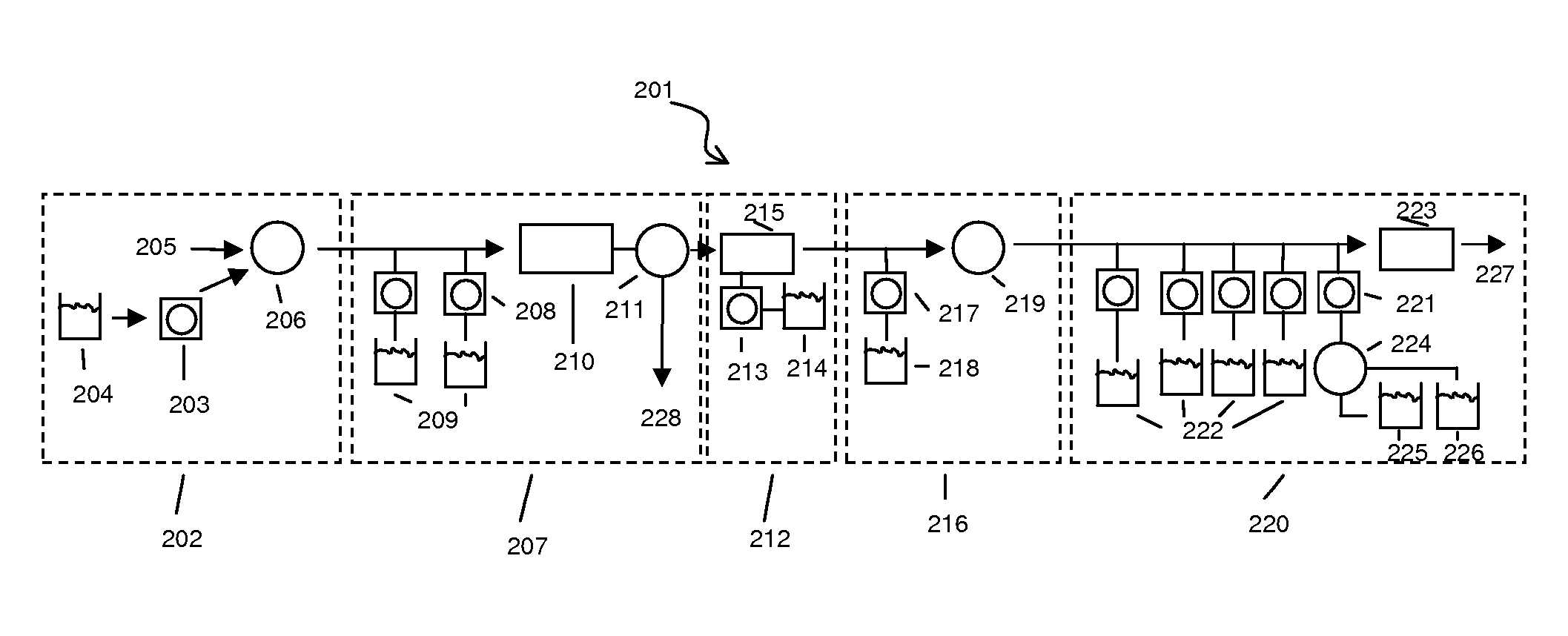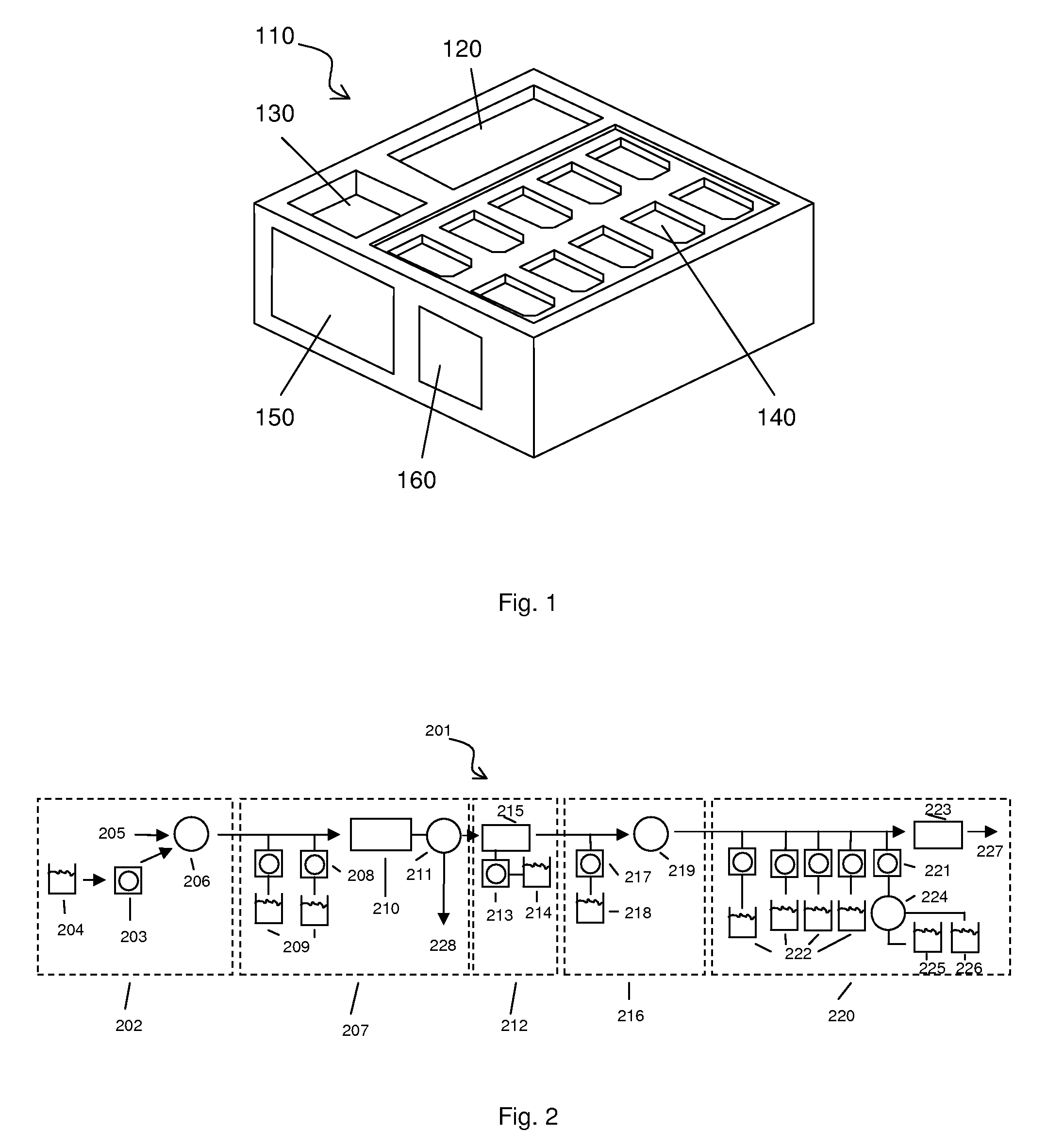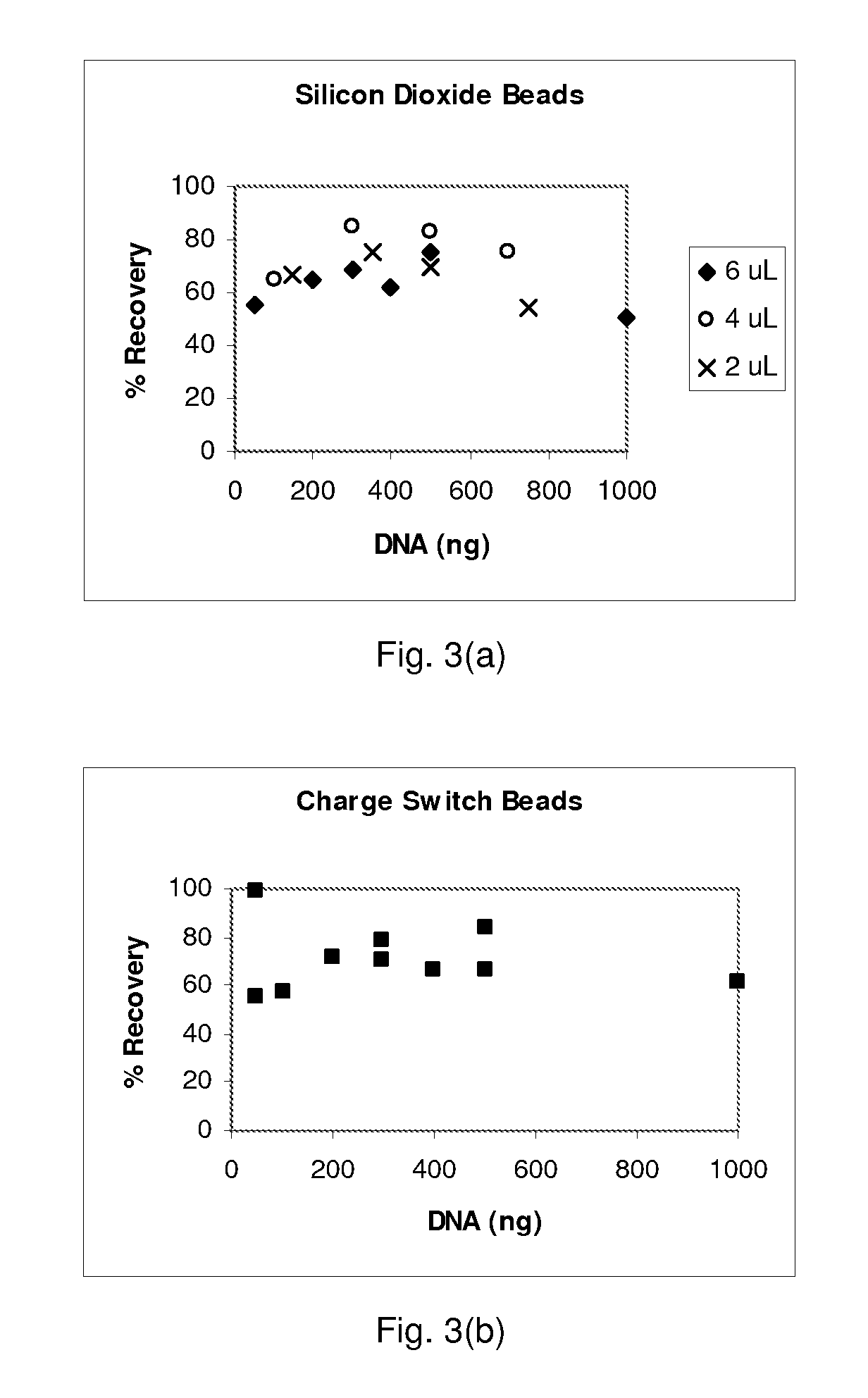Automated sample-to-microarray system
a microarray and automatic technology, applied in the field of biological sample processing and identification, can solve the problems of microarray technology requiring costly and cumbersome equipment, bioterrorism adding to the threat, and reducing the number of pathogens that are possible to d
- Summary
- Abstract
- Description
- Claims
- Application Information
AI Technical Summary
Benefits of technology
Problems solved by technology
Method used
Image
Examples
example 1
[0066] Hybridization, staining, and washing—A “hyb-wash-stain component”, has been demonstrated to expedite the processing of commercial microarrays. Affymetrix resequencing GeneChips designed for the detection of upper respiratory pathogens were used. The normal procedure for processing these chips is as follows: (1) Inject a sample containing biotinylated DNA and incubate in an Affymetrix rotisserie oven for 2-16 hours. Mixing is accomplished as an air bubble tumbles across the surface of the microarray. (2) Remove the hybridization mixture. (3) Stain and wash using a 3-step staining procedure in an Affymetrix wash station for 1.5 hours. (4) Image on a confocal scanner. While these protocols are acceptable for large centralized laboratories with trained technicians, they may not be optimal for portable devices for point-of-care diagnostics. If commercially produced nucleic acid microarrays are to be used in portable biosensors, it may be useful to design miniaturized and integrate...
example 2
[0078] Lysis and Purification of Nucleic Acids—Reagents and materials: Binding buffer PB was obtained from Qiagen. PBS was made by mixing a powder packet from Sigma into 1 liter of nuclease-free water. MasterPure DNA purification kits came from Epicentre and were used according to the manufacture's recommended protocols. SDS solutions were made from a 10% SDS stock from Ambion. Human genomic DNA (Roche) used for testing bead extraction was first subjected to a restriction enzyme digestion (MCrBC enzyme, reagents, and protocol from a New England Biolabs kit). Three types of beads were tested: silicon dioxide powder with a size range from 200 nm to 10 μm (approximately 80% between 1-5 μm) obtained from Sigma, spherical silica gel with a size range of 40-75 μm obtained from Silicycle, and glass beads with a size range of 30-50 μm obtained from Polysciences. Nasal wash in sterile PBS was obtained from human volunteers and was not screened for other pathogens. The Sybr-green kit (Molecul...
example 3
[0093] Disposable devices—FIGS. 5 and 6 schematically illustrate disposable components that are placed on a base device. The base contains the components for sonicating, pumping, and heating the sample in the various parts of the disposable device. The disposable device contains all the chambers, ports, and possibly reagent reservoirs or inputs. The fluidic paths are shown by arrows. The added reagents are labeled as follows. “Sample” is the sample input stream. “W” is a wash input line. “E” is the elution input line. “Waste” is one of the outlet lines from any module. “R1” is an input line for reverse transcriptase reagents. “R2” is an input line for PCR reagents and primers. “R3” is an input line for Fragmentation enzymes and buffers. “R4” is an input line for labeling reagents and buffers. “Prehyb” is an input line for the prehybridization buffer. “Hyb” is a cocktail containing the hybridization reagents. “W” is an input line for the wash buffer. “S1” is an input line for stain 1...
PUM
| Property | Measurement | Unit |
|---|---|---|
| Content | aaaaa | aaaaa |
| Selectivity | aaaaa | aaaaa |
Abstract
Description
Claims
Application Information
 Login to View More
Login to View More - R&D
- Intellectual Property
- Life Sciences
- Materials
- Tech Scout
- Unparalleled Data Quality
- Higher Quality Content
- 60% Fewer Hallucinations
Browse by: Latest US Patents, China's latest patents, Technical Efficacy Thesaurus, Application Domain, Technology Topic, Popular Technical Reports.
© 2025 PatSnap. All rights reserved.Legal|Privacy policy|Modern Slavery Act Transparency Statement|Sitemap|About US| Contact US: help@patsnap.com



